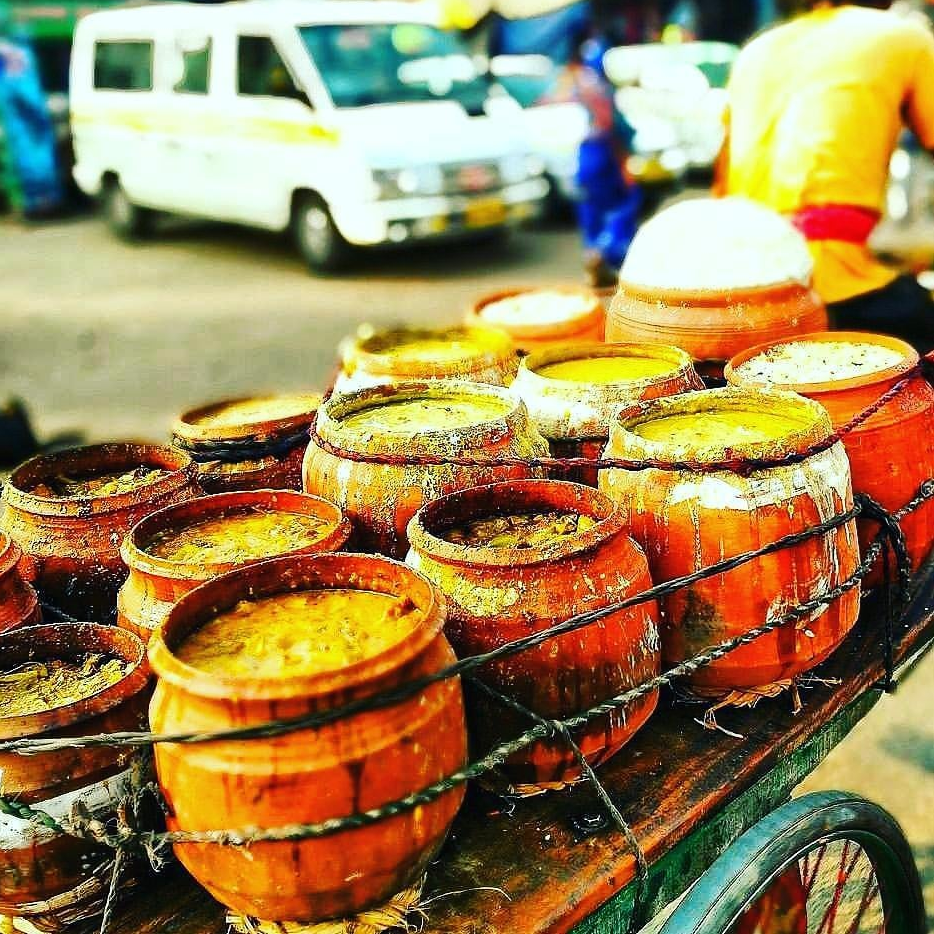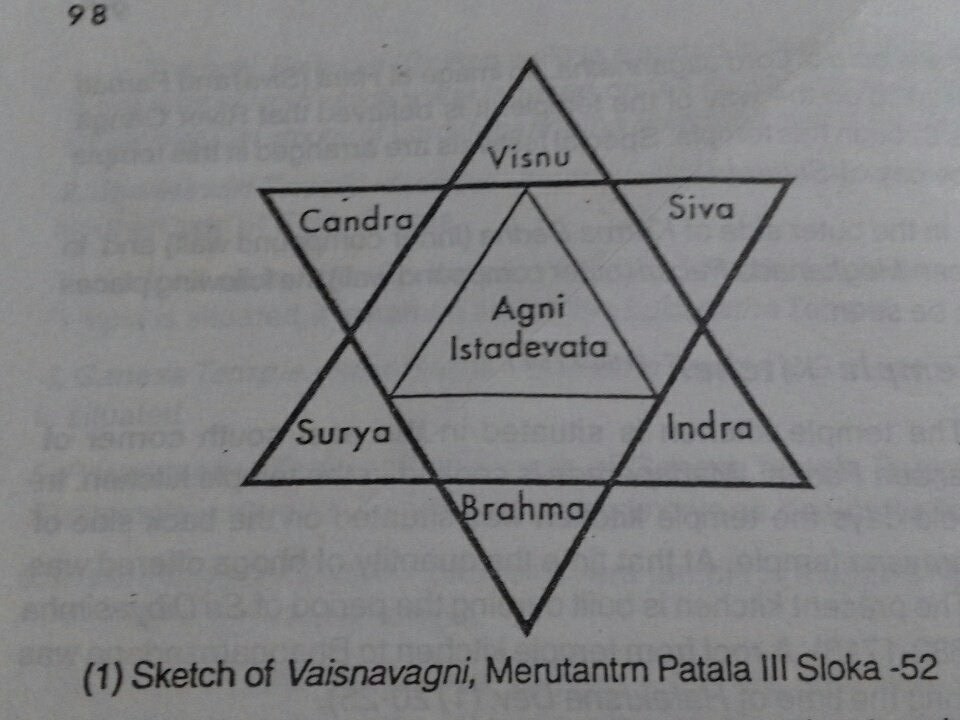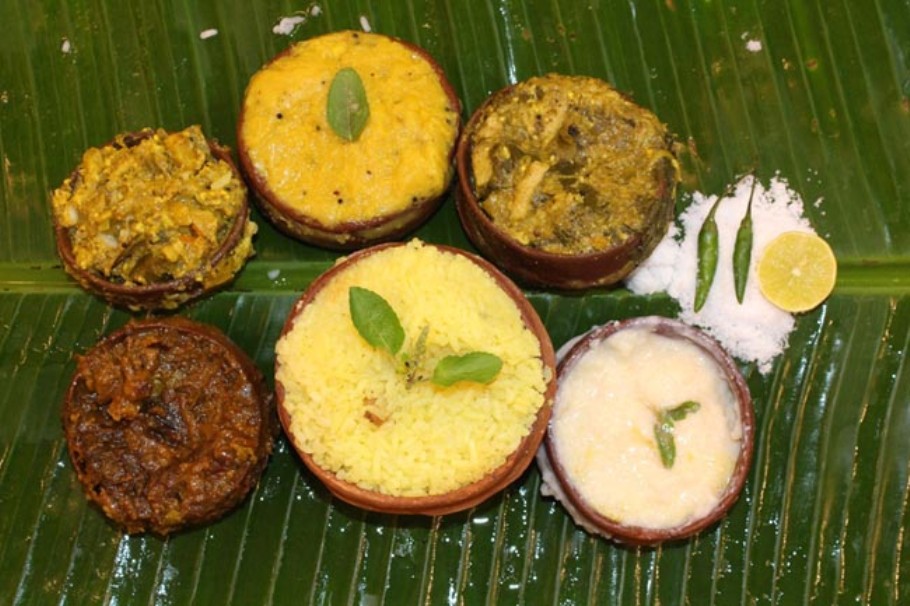THE ‘HUMONGOUS’ KITCHEN
In Puri, Jagannath Temple there’s a special area of the temple that attracts the eye: The Temple Kitchen. Catering around 1,00,000 devotees daily. The Rasoighara of the Jagannath temple in Puri is believed to be one amongst the biggest kitchens within the world. The kitchen has 240 ovens or “chullhis” with cooking drained earthen pots. All foods cooked by Suaras or Mahasuara or Supakara. Beginning of the temple the charge has been given to them. THE ‘MAHAPRASAD’ is directly sold within the Anand Bazar, its allocated separately inside to temple premises. During Rath Yatra when the deities, take their place on their respective chariots, are offered only “khechudi bhog” (a thin rice and thick yellow dal preparation) which is cooked in limited quantities.
The world’s huge kitchen stops working when Lord and his siblings visit to Gundicha Temple during Rath Yatra. The scene transfers to the Gundicha temple where cooking of Mahaprasad by mahasuar sevayats starts barely after the deities make their ceremonial entry into the holy place and is placed on their high plinth.
The Mahaprasad is taken into account very valuable for spiritual liberation. One should chastely the Mahaprasad while being seated on the ground. The kitchen of Jagannath temple serves to enthusiast each day. There are two different passages that the food out from the kitchen are. The first one has been offered in bhoga mandapa for larger kotha bhoga and chatra bhoga. The other one offers inside the interior sanctuary of the temple known as kotha bhoga.

300 DISHES IN ALL!
Inside the kitchen of Puri Jagannath temple chhapan bhog (56 dishes) is prepared, but in point of fact the kitchen prepares 300 items including ghee rice, jeera rice, sweet rice and a spread of dals and peethas (cakes). The demand for these things goes abreast of festive instance.
Around 600 supakara niyog members are directly engaged in cooking. The blessed mahaprasad the feeds a staggering one Lakh people every day. It’s believed that total food never falls short within the temple kitchen. The food cooked in rosaghara is vegetarian and use of onion, garlic, potatoes and gourd don’t seem to be allowed. Particular sorts of earthenware referred to as kudua are used for cooking. Abadha that’s offered as lunch around 1 within the afternoon is that the most vital food.
FOOD AND ITS PREPARATION
The helpers who wash rice and cut vegetables remain outside. Water for cooking is conduct from two wells-Ganga and Jamuna-inside the temple premises. Enchant for its sweet taste, the dish is high in balanced advantage, for example, jiggery is loaded with properties. Is that help in digestion? Rich with anti-oxidants and minerals, like zinc and selenium, jiggery prevents early ageing. Herbs, like cardamom and black pepper, are potent anti-oxidants, bringing the sweet dish to life. Coconut adds a definite flavor to the delicacy. This is good for heart and controls glucose levels in our body. Enriched with facts, proteins, carbohydrates and vitamins, it’s a dish that’s meant to impact collective nutrition levels.
Four forms of rice are prepared within the kitchen of Srimandir. They’re Sitalanna, Salianna, Dadhianna and Khiranna. Sunakhila rice cooks together with ghee and Phalatabha Kharada lavana to induce Salianna. For getting Khiranna together with Basmati rice; milk of cow and kharada lavana are mixed and cooked. By mixing plain rice with curd, Dadhianna is ready and mixing rice with Tabharasa and Kharada lavana, Sitalana is prepared.

INEXTINGUISHABLE FLAME
The rosaghara is found within the temple’s south-east direction within the outer compound. This is often 150 feet long, 100 feet wide and about 20 feet high. It consists of 32 rooms with 250 earthen hearths inside. Around 600 cooks locally called Suaras/Mahasuaras/Supakaras and around 400 assistants cooks prepared foods each day. There are three varieties of hearths (earthen ovens locally called Chullahs) inside the kitchen. Those are Anna Chuli the rice hearth, Ahia Chuli and Pitha Chuli the dessert hearth.
The rice hearth is 4 feet long 2.5 feet wide and a pair of feet high. The oblong space created between two rice hearths is thought as Ahia. Lentil and other vegetable curries like Beshara, Mahura are cooked within the Ahia Chuli. There are ten cement based Pitha chuli in rosaghara. Fire of hearth inside kitchen is understood as vaishnava Agni which is employed to serve Lord Jagannath himself. Moreover, this can be never extinguished.

MYTHOLOGICAL BELIEFS
The legends say that the Goddess Laxmi helps Suaras and Mahasuaras to cook all foods for her consort Shree Jagannath and his siblings. All works inside the Kitchen has been supervised by Goddess Lakshmi herself. There is custom to promptly burying and starting a brand new batch of food if Lakshmi has any displeasure with the cooking. During car festival when Lord Jagannath is in Sri Gundicha temple, she is purported to own no enthusiasm to cook and then the food is tasteless.
Frequently also said that if Maa Lakshmi is incensed with the preparations by the cooks, a dog will appear curious on the temple floor. If the dog is spotted, all the food must be buried and ready again. As a result no dog is allowed to invade the temple boundaries. This dog is supposed to be Kutama Chandi. She is a tantric goddess responsible of purification of food and temple premises.
Although the steam cooked preparations are carried to Lord slings and especially offered to Goddess Vimala on earthen pots, no aroma flow from the food. But when it carried back to the sale point a flavorsome aroma spreads along the way. Its feels heavenly. Can’t express in worlds, one can only feel, its prepared by Divine Mother of Universe for her consort the Lord of Universe.

Cover Photo Credit: https://www.instagram.com/pandasatyaswarup/

